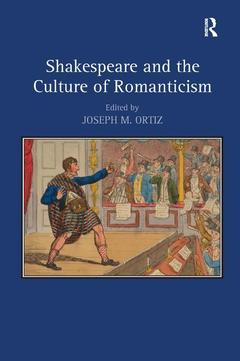Shakespeare and the Culture of Romanticism

Date de parution : 09-2013
15.6x23.4 cm
Disponible chez l'éditeur (délai d'approvisionnement : 14 jours).
Prix indicatif 189,28 €
Ajouter au panierDate de parution : 11-2016
15.6x23.4 cm
Disponible chez l'éditeur (délai d'approvisionnement : 14 jours).
Prix indicatif 64,97 €
Ajouter au panierMots-clés :
Young Men; winters; Pierre Le Tourneur; tale; Fox Hunt; james; Mid Air; boaden; Green Sickness; drury; Richard III; lane; Fontainville Forest; boydell; Perkin Warbeck; gallery; Act III; fontainville; Exhibition Catalogues; forest; Gaston De Blondeville; Hamlet's monologue; Elegiac Sonnets; dramatic reform plan; Baillie’s Drama; romantic critics



